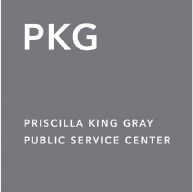PKG Social Impact Internships: Promia Chowdhury (’24)
I am Promia Chowdhury, a Course 6-3 freshman student at MIT who interned at Ek Kadam Aur’s High School Leadership Program this semester. As a social media intern, my responsibilities regarded the realm of social media, where I worked with other employees on creating and writing posts for the non-profit organization’s LinkedIn profile.
Ek Kadam Aur Foundations’s High School Leadership Program aims to bridge the gap in education for underserved students throughout India and Nepal by allocating resources to them that may have been otherwise inaccessible. The core issue the non-profit organization aims to tackle is the problem of education inequality. As a social media intern, I’ve had the opportunity to attend EKA’s bi-weekly virtual classes on Saturday and Tuesday mornings (India Standard Time) that invite various guest attendants to lead workshops and short lectures on topics to the students.
As an experience, it has been very enlightening to learn of how classrooms all over the world—from the ones I am enrolled in at MIT, to the ones Ek Kadam Aur partners with all the way in India and Nepal—have adapted to virtual learning in the middle of the COVID-19 pandemic.
During last March, when all my teachers shifted their classroom locations to a mere zoom number, I found the drastic change hard to cope with, but was eventually forced to acclimate. Virtual learning is definitely not the way I prefer learning, however; I have found that my attention span has become way shorter and I definitely do not feel like I have the social support I’d have had I been attending my freshman year at MIT in-person. If this is the effect virtual learning transitions have had on me, an able-bodied student with internet access in a first world country, imagine how drastic an impact the pandemic has had on on rural, low-income students in South Asia, many of whom lack the support system and internet access I have, and many of whom are blind or have learning disabilities on top of that.
The COVID-19 pandemic has made all the more apparent the deeply ridden educational inequality that exists between low and high income, between able-bodied and disabled and between the developed and the still developing world. While the transition to virtual learning was mostly seamless in MIT, students in India and Nepal have not had that same luxury, due to simply lacking the same internet connection that the world has become so reliant on throughout the past year. During my very first week at Ek Kadam Aur as an intern, I was brought to light the heavy lifting the Foundation did to close that inequality, simply by providing their students phones. Things that I had never considered before, such as the way blind students having their barriers to education increase overnight due to their physical classroom suddenly becoming screens, were now brought to the forefront of my mind.
It was especially enlightening, however, to observe the ways virtual transitions have also made certain things more accessible, rather than the opposite. Things as simple as automatic real-time closed captioning have become widespread during the pandemic, no doubt being useful for students who are hard of hearing and must rely on them during their Zoom calls. On the other hand, I’ve witnessed EKA’s High School Leadership Program connecting students from several different schools to workshops and virtual lectures conducted by many academic and industry professionals, one of whom was even a feature on Forbes’ “30 Under 30” list back in 2016. I doubt many of the students would have had this same access without virtual connections acting as an agent to bridge the gap in physical borders.
The pandemic is certainly not going away any time soon, but as more and more in-person activities slowly resume and we lose this strict reliance on the internet to connect us with our friends and schools, it is worth examining how inequality that was suddenly exemplified during quarantine can be further addressed using the lessons we have learned from virtual learning. For example, I am now realizing how easy it is to add closed-captioning to videos, and how this easy bridge in accessibility is oftentimes a luxury for hard-of-hearing people (seriously: YouTube removed community captioning—what’s up with that?) When schools resume in person, how do educational institutions plan to accommodate physically disabled students, who are on the opposite end, having had their accessibility increased due to virtual learning? How do institutions plan to lessen drastic gaps in educational access from income inequality after the pandemic? Ek Kadam Aur Foundation has been aspiring to rectify this issue since before COVID-19 hit, so it will certainly continue to persist after everyone becomes vaccinated. I am incredibly privileged enough to have the resources for a good education, especially at an institution like MIT. My experience this semester has only highlighted how much work there is left to extend that privilege to not just myself, but to everyone.

Interested in a Summer Social Impact Internship? Learn more about how to apply here!
Tags: COVID Relief, K-12 Education, Social Impact Internships, Social Impact Internships Spring 2021
